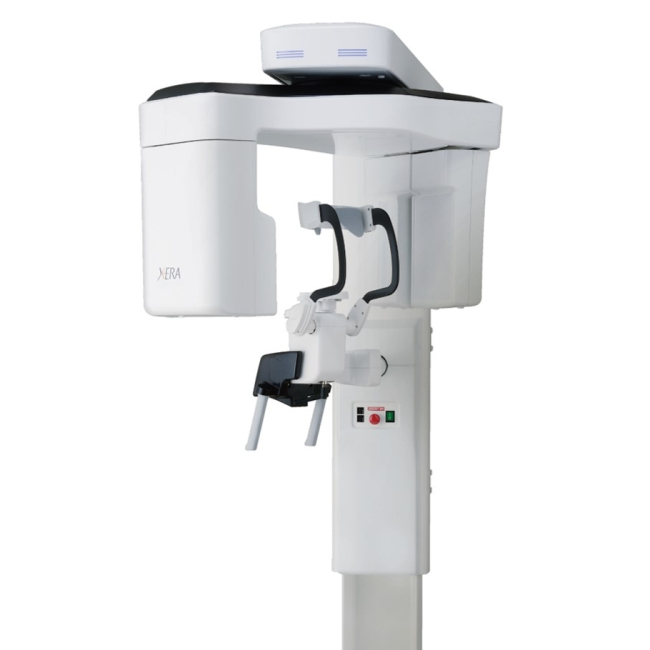Dental CBCT X-era (With Acq PC)
What’s so great about a Direct Conversion Sensor?
Most Panoramic CMOS sensors use lower-cost materials that are less sensitive to x-ray. Therefore, these sensors must convert x-ray to light before converting to a digital signal. This can result in image blurriness because the extra conversion step can cause the radiation to “fan out” and inadvertently trigger surrounding pixels. The Panoura 18S utilizes a Direct Conversion (sometimes referred to as “Cadmium Telluride”) sensor that converts x-ray directly to digital, which contributes to a much sharper image.
Every scan captures over 50 different panoramic layers!
With most panoramic x-ray units, the arch of the patient needs to be exactly where the machine wants: along the path where the beam is focused.
- If positioning is not precise, a poor image can result.
- If the patient shifts slightly during the time the operator walks out to initiate the scan, a poor image can result.
- If the patient’s arch doesn’t match the trajectory of the scan, certain anatomy may not be in focus.
- The emergence profile of the anteriors could make it difficult to capture both mandibular and maxillary apices clearly in the panoramic scan.
| Manufacturer | IMAGEWORKS |
|---|






